UP TO THE MINUTE
Kiki Redhead & Brynn Wildenauer - Choose Your Hues With FUSE! - PODCAST TRANSCRIPTION
October 10, 2023 at 12:00 p.m.Editor's note: The following is the transcript of a live interview with Brynn Wildenauer and Kiki Redhead from Sherwin-Williams. You can read the interview below, listen to the podcast or watch the video.
Karen Edwards: Hello, and welcome to MetalCast by Metal Coffee Shop. My name is Karen Edwards, and we're here to talk about the FUSE architectural color forecast, and why color is so important. I'm excited to welcome the color experts from Sherwin-Williams, Brynn Wildenauer, and Kiki Redhead. Would you guys please introduce yourselves and tell our listeners a little bit about you?
Brynn Wildenauer: Yeah. My name is Brynn Wildenauer. I'm the architectural color designer for the Sherwin-Williams coil and extrusion business, focusing on trend forecasting, color development, product development, as far as marketing materials for sales teams, but also customers as well.
Karen Edwards: And Kiki?
Kiki Redhead: Yeah. Hi, I'm Kiki Redhead. I'm the global head of color, material, finish and trend, for our performance coatings group here at Sherwin-Williams, which includes our coil and extrusion team. And I also lead our design house efforts, which is a facility here in Minneapolis, where both Brynn and I work. And this is where all of the color information comes from, is here at this design center.
Karen Edwards: So exciting. I love color, but tell our listeners, why should contractors care about color?
Brynn Wildenauer: Yeah, I mean, I can start here. So contractors, when we talk about color, we've had palettes that have existed in the market for a very long time, and people choose the colors based on what's available. But when you're talking about people building a building that they care so deeply about, it's really more about the pride and what they really want. And so when we update those color palettes and have colors that are really desired in the market, typically the customer is happy and willing to spend the money on upgrading their facility.
Kiki Redhead: Yeah, I'll add a little clip to that as well. As we see colors that emerge and evolve in the marketplace, with building trends and architectural trends and even material trends, having the right colors at the right time really helps to sell more of that particular product. So if you're looking at metal roofing or metal siding, if you've got the right colors in your collection to guide your customer or even the consumer, you'll see your sales drive more towards those colors.
Karen Edwards: Wow. It's amazing what colors can do. So if we look at why the right color is so important for a business, I think you kind of hit the nail on the head with that comment about you'll sell more, right?
Kiki Redhead: Absolutely. And not just that, but one of the things that the right colors do is that they have a life of their own, right? They have their own lifecycle and their own lifespan. And when they first emerge, it might be a little scary because you don't know how well and how that trajectory over time is going to do, but that's why you rely on us to help you with that. And so we can help guide you towards the right colors that we know are going to continue to sell, but not just for this year and next year, but five years, seven years, 10 years down the road.
Brynn Wildenauer: And to that point too, we do a lot of research in regional markets. So when we have a customer color palette that we're analyzing, and maybe they're in the southwest, some of those colors that are in the northeast don't work. And so having a unique color palette that serves an individual market when it's regionally or segment based into a certain industry, that gives a real competitive advantage to have colors in their stock that will move quickly because they're right for the market.
Karen Edwards: Tell us about some colors that are currently popular in the marketplace.
Brynn Wildenauer: So we're seeing a lot of trends in lessening contrast of buildings. So we see, still popping up in Texas or Tennessee, the black roof with the white house. We're seeing that level of contrast kind of come together a bit into more monochromatic schemes. As we look at that, the grays are coming back up, like hot, hot, hot. We're seeing blacks lightening up a little bit, and that's for a variety of reasons. It's more weather stable, as far as testing in our products, different things like that. But it's also that lessening contrast. And we're seeing neutrals warming up pretty heavily right now in the market across the board. So as we're seeing the stark whites that maybe have a blue undertone, we're seeing that kind of darken a bit and also add some warmth to it. So those are the two biggest trends we're seeing as far as what would apply to this podcast here is, we're seeing the schemes kind of coming together, not being as black and white, for lack of a better term, but also seeing the neutrals warming up really heavily.
Kiki Redhead: And I would say, on a little bit more of the chromatic side for those people that are a little bit more bold and risky and fun and creative in their color choices, going away from neutrals into, we're seeing a lot of coppers, terracottas, corten steel type looks, so kind of getting into some of those warmer red-orange tones. And then also on the flip side of that, for chromatics, a big drive towards the greens. And we know that sage green and forest green roofs have been a staple for a long time, and they've been in color collections for many, many years. We're seeing those continuing to darken and become a little bit less blue and more green-based.
Karen Edwards: Wow. So tell me about the FUSE report. What it is, and how the colors are developed for it?
Kiki Redhead: So our FUSE report, we do a trend forecasting, and we have an entire process where we really dig into research and identifying these trends that are relevant for the market, that are going to have longevity. And essentially the way that we can report this out and share the news about this is through these presentations and through these brochures. So our FUSE report has a main megatrend of what's happening in architecture globally, essentially, with that FUSE idea. And then we break it down into three different macro trend stories. So macro trends are like the trends for the next five to 10 years that are everything from consumer trends to product trends to technology trends to manufacturing trends, architecture and design trends. And then, each of those three trend stories are supported by six emerging colors in the marketplace. So I'm going to let Brynn talk a little bit more about how we get to the colors, and what those colors are.
Brynn Wildenauer: So when we start to analyze the color spaces for the individual markets, so when we put this report together for architectural trends, we want to cover a ton of different industries. As many as we support within the coil business. So we do a lot of research into what's happening in monumental architecture, not even just in North America, but globally. So we take a look at what's happening in all these different markets and also where color is evolving.
So like I said, the neutrals are warming. So what does that look like in all the different markets that we analyze for this report? And a big, big part of our FUSE report is showing these colors in action. So really taking that guesswork out of the picture is showing, within a lot of different spaces, what would this color look like on a barn versus a monumental building and everything in between, and how does that kind of all work together as far as the palettes coming together and working within? And so we're looking at how color schemes are evolving, how color is evolving, different effects in the market that are becoming more and more popular to individualize the products per customer or per project. And taking all of this data and bringing it together and showing how this would work in application.
Kiki Redhead: We talk a lot about the capabilities that we have with the different textures, for example. Mica metallics, color shifting, the capabilities that we have to do even different print looks, like wood grains. That's not necessarily something that you would do on the roof, you might do on a siding panel instead. But we showcase all of that through FUSE, and it really allows our customers to see the breadth of the capabilities and what could be.
Brynn Wildenauer: And it's also highlighting innovation as well, because we're showing the new things that are up and coming in our labs and in our R and D.
Karen Edwards: Perfect. Because I was just going to ask, how does a contractor use the FUSE report to make sure they're staying on trend?
Brynn Wildenauer: I think the best way to do it is to get a presentation, kind of review all of the materials, and then understand that this is a very widespread report. And so, in the different technologies or in the different methods of showing these, you can work with the metal manufacturer, your metal supplier, to really see what would work best in the area, and then they can reach out to their Sherwin sales rep and then work on adding some new colors to the offering.
Karen Edwards: So you talked a little bit about what goes into pulling this report together, but it's very time intensive and it doesn't come out every year. This comes out every couple of years?
Kiki Redhead: Yeah. We're on a two-year cadence typically, because it is an evolutionary thing. So we're always doing research, but then we've kind of got to put a stop to it at some point and say, okay, now let's take all that research and let's start the process for actually putting the colors together, working with our lab to be able to develop the colors and the finishes and all the unique effects. And then also working with our partners in marketing and advertising and graphic design, because that is roughly about a nine month to a year long process as well. So it's really, when we put out one of these reports, it's like, boom, we're starting the process for the next one. And so it's kind of a continuous flow. Obviously, our customers don't see that, but we are always working on what did we do in the past? Take that look back. What's happening in the market currently? And now, where are we going to go for the next few years?
And the thing I'll say is, even though the report only comes out every two years, we're looking 3, 5, 10 years out. So that two year report, this FUSE report isn't just good for the next two years. It can be good for the next five years or 10 years. And the fun thing is, when we do come out with the next one, then you can use FUSE and the new one as comparisons, kind of to see, okay, what shifted? What evolved? Did something new come out? A new innovation, a new technology within the coatings finishes world? Or what stayed the same? So if I looked at this navy blue and I was kind of considering this navy blue as maybe an addition to my collection or what I want to talk about with my customers, where is the navy blue now two years later? Did I bank on the right color? And you can look at it through your sales and what the customer is specifying, and then you can also kind of validate that by looking at our trends and reviewing those in comparison.
Karen Edwards: I like that you said what changed, because what we talked about in a previous conversation was how things that are happening in the world currently influence color. I think that's fascinating.
Brynn Wildenauer: And I will also add that we know that the building products market evolves very slowly. So when we're looking and analyzing at these things, we've had a navy blue in our forecast the last few years because it is very important and it's shifting slightly, but that navy color space is sticking around for a long time. So when we're analyzing all of this, we understand that a lot of these things are hard to change in the market. And also, the forecast is not always easily digestible because change has not been a constant in the building products industry, as far as color, for a long time. So we understand that and want to make sure that we're taking our time and making sure that this is all very right for all the markets that we serve.
Kiki Redhead: And on the flip side of that, while change might be slow in the building products world and not always constant, it is constant in every other aspect of life. Really, change is the only constant that we can rely on, day to day, year over year, within our lives, within society and politics, economy, design. So when we think about that, knowing that the building products industry, because of the processes, the costs behind big shifts and large changes, that we want to be able to help you find that balance, right?
Karen Edwards: Yeah. I think that it's just incredible, the power that color has, the way it can make you feel. For those of you listening and not watching this, we all have some shade of navy blue background when we're talking about navy. So that is kind of hot right now. So talk a little bit about where to find this report. How do I get my hands on it?
Brynn Wildenauer: So you have a couple different places that you can find the report. So the coil and extrusion version is on coil.sherwin.com. So we've got a downloadable brochure, we've got some videos on there. And then we also are presenting, Kiki and I are presenting the FUSE forecast at MetCon this year. So we'll be having a presentation in Vegas, going through the trend forecasting process, what FUSE is, how it applies, and then what's next as far as applying the forecast to your product lines.
Karen Edwards: Now, you mentioned briefly earlier about talking to your suppliers about color. What's that conversation look like for a contractor?
Brynn Wildenauer: Yeah, so I think when interested in evolving a color palette or a standard color offering, it really starts with, "Okay, what can I get? What is available that's maybe not necessarily custom?" So when taking your color palette and analyzing it, seeing what your supplier has available. And if that's not quite right, oftentimes we see the supplier come to Sherwin and say, "Hey, I'm getting asked for a lot of navy blues. Can you help us figure out what we should be offering to better serve our customers?" So it's kind of that chain reaction of, if we get enough questions about it, a lot of times those metal manufacturers will come to Sherwin to get some expertise on how to help better serve their end users.
Karen Edwards: And I'm sure they're looking at the report themselves, determining what colors they want to offer, right?
Kiki Redhead: They are. And in a lot of cases, we're collaborating with them and actually doing workshops with these customers, with these suppliers, and we're walking them through the process and we're collaborating together to develop new colors. So it's kind of a win-win for everyone, as that chain reaction, like Brynn said, the chain reaction that the contractor can start going this way. But then the chain reaction, once we start working with those suppliers, then it goes back down the line.
Karen Edwards: Excellent. Well, Brynn, Kiki, I want to thank you so much for being here and talking about colors. It's always interesting and I learn something every time that I speak with you. So I just want to thank everybody for listening and watching this MetalCast. Be sure to visit Sherwin-Williams' directory on Metal Coffee Shop. And subscribe to MetalCast on your favorite podcast platform, and turn those notifications on so you don't miss a single episode. And I'll be seeing you next time on MetalCast.
Recommended For You
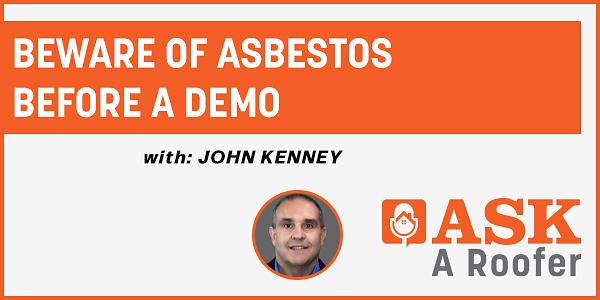
Beware of Asbestos Before a Demo - PODCAST TRANSCRIPT
Read More ...
Rob Soper - Metal Roofing Takes Off With Technology - PODCAST TRANSCRIPTION
Read More ...
John Sheridan – Check out the Training Zone at METALCON 2023 - PODCAST TRANSCRIPTION
Read More ...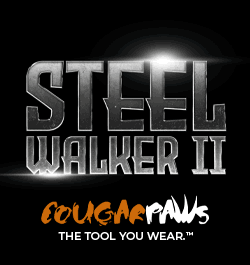



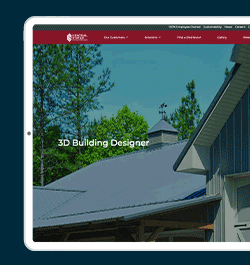
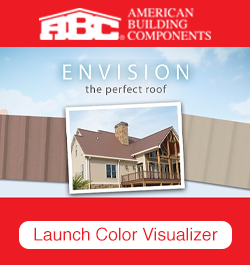


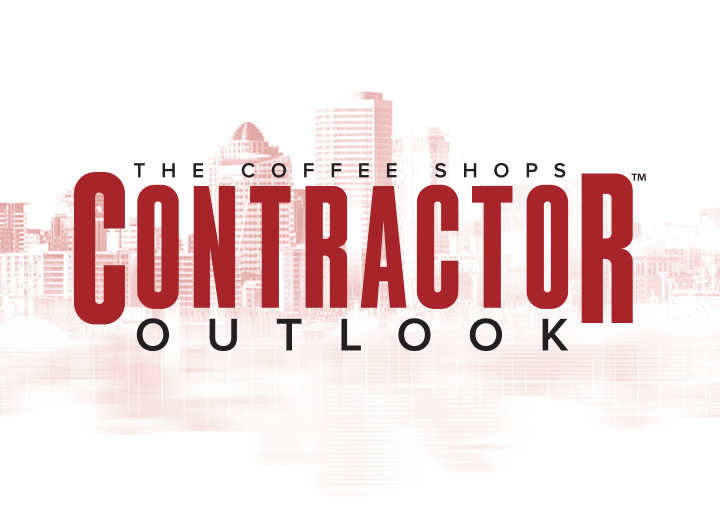






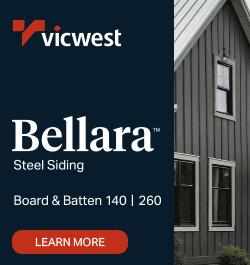



Comments
Leave a Reply
Have an account? Login to leave a comment!
Sign In